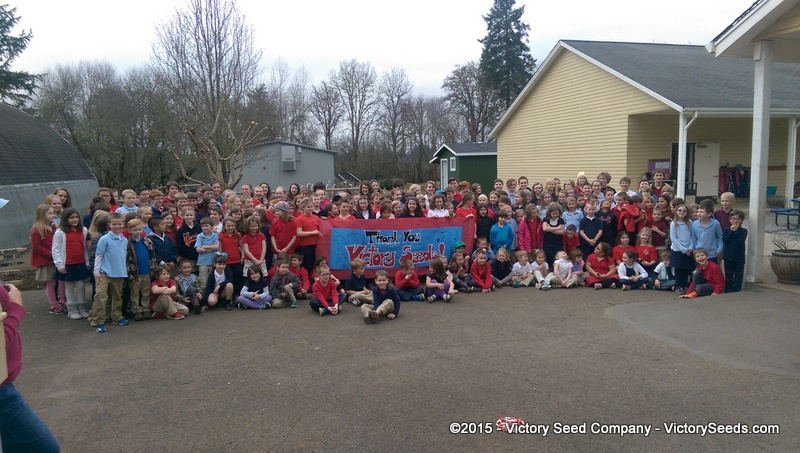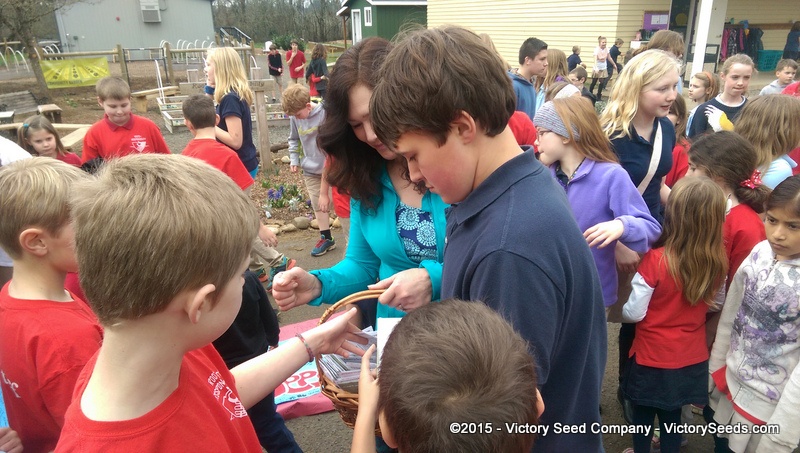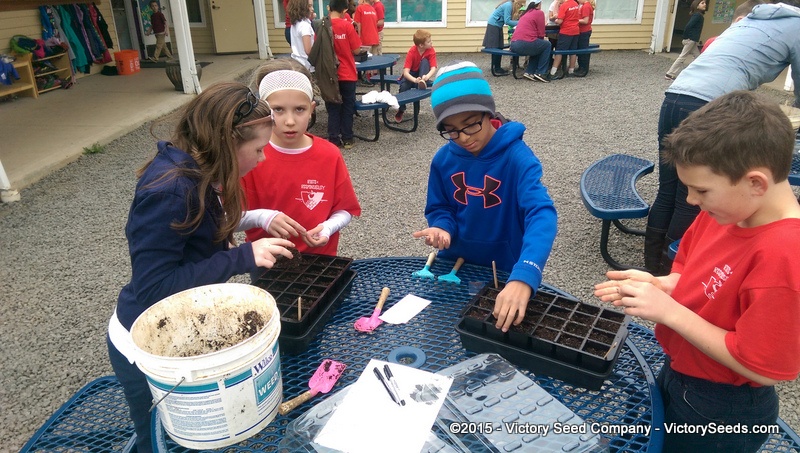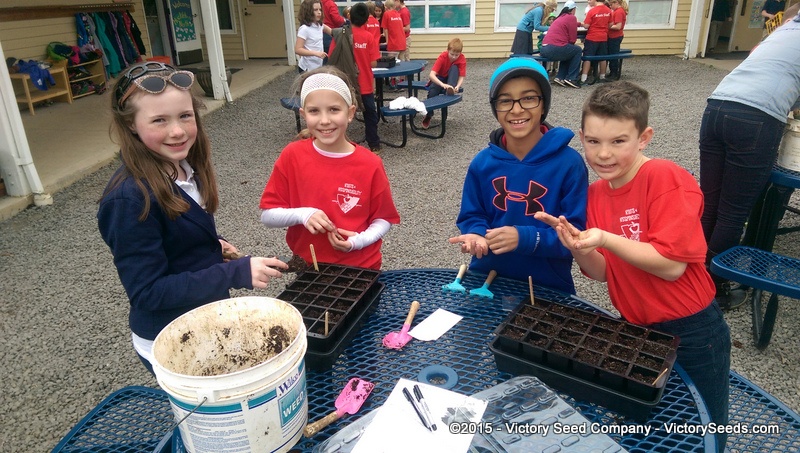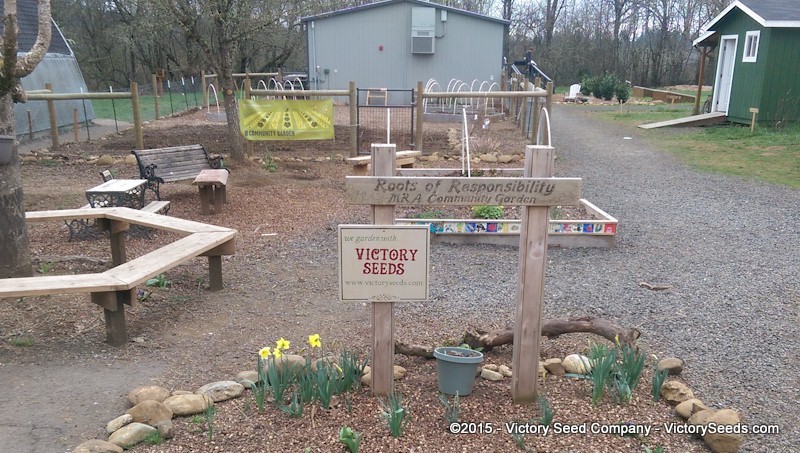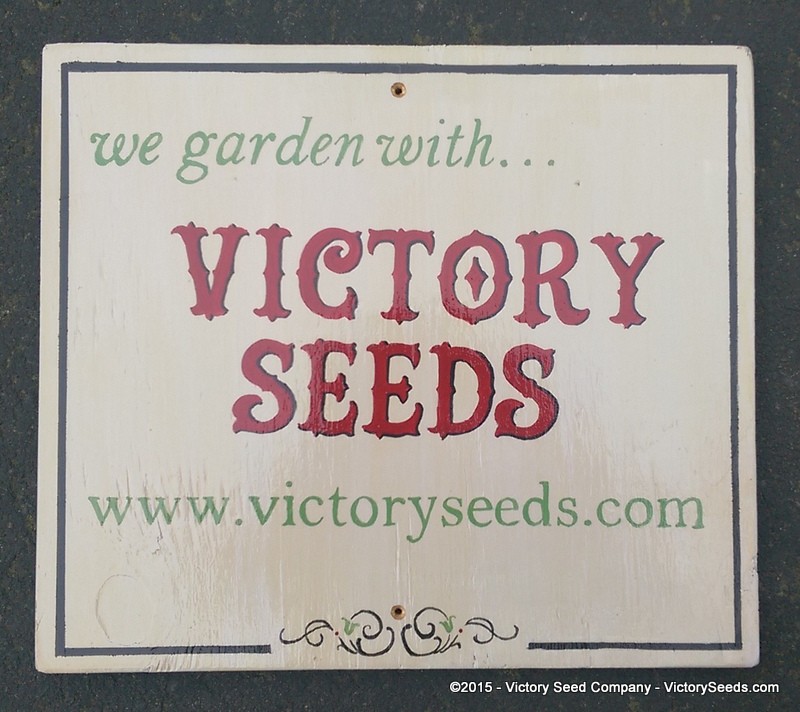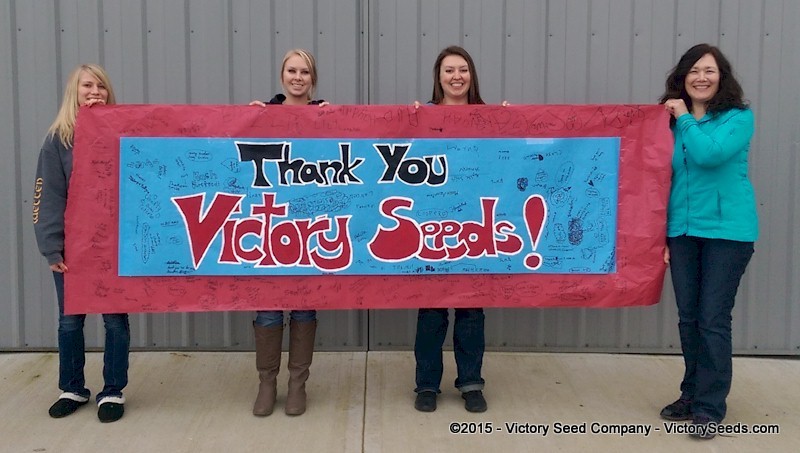Wow . . . What a surprise Denise and I received this afternoon!
Although the primary mission of the Victory Seed Company is to preserve rare seed varieties and to keep them available to gardeners, we also believe that by sharing a portion of our time, talents and property, we are helping to make our world a better place. Charitable work is a primary part of our lives, both personally and as an organization. Your orders directly support this work. You can read more on this subject by clicking here.
One of the projects that we help to support is the community garden at a local grade school. Normally, Denise takes care of getting seeds up to the school but this time we were asked to both come and at a specific time. We were expecting a small meet and greet.
When we arrived, we were surprised to see that the whole school was waiting for us with a beautiful banner that was signed by all of the students thanking us.
After a photo op, some of the kids rushed Denise requesting specific seed packets. They were on a mission and asked for broccoli, cabbage, lettuce, kale, basil, peas . . . all the things that they could get started now using their new seed starting equipment.
The students, packets in hand, ran off to tables that they had previously readied with the materials necessary to get their seeds sowed.
Cell trays were filled with seed starting soil mix, seeds carefully sown and covered, and plant markers put in place.
What was really cool was that we got to keep the banners that the kids made and signed. It is now hanging up in our seedhouse.
Under amazing leadership, Molalla River Academy’s “Roots of Responsibility” Garden program is thriving. Working in the garden with children is not only good exercise, it is a perfect setting for teaching. The students are learning about biology, nature, weather, food production, healthy choices, a sense of accomplishment, teamwork, responsibility . . . Basically important, core life skills.
Garden-based learning is not only fun for kids, studies have shown that their hard work growing fruits and vegetables directly leads to an increased probability that they will actually eat them! And as every parent knows, getting children to try new things or to choose healthy snacks is difficult.
We were so happy to see how excited all of the kids were and look forward to our next visit!
Additional Information:
- “A Garden Pilot Project Enhances Fruit and Vegetable Consumption Among Children,” by S. Heim, J. Stang, and M. Ireland, Journal of the American Dietetic Association (2009); 109; 1220-26. [PDF Format]
- “Impact of Garden-Based Youth Nutrition Intervention Programs: A Review,” by R. Robinson-O’Brien, M. Story, and S. Heim, Journal of the American Dietetic Association (2009); 109; 273-80. [PDF Format]
- Victory Seed Company’s “Gardening with Kids” resource page.
